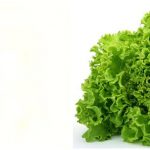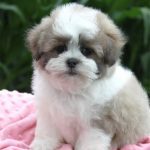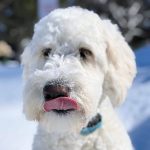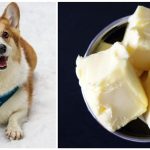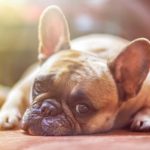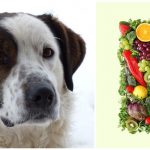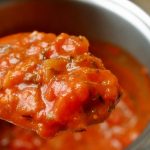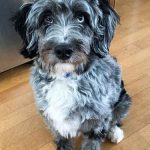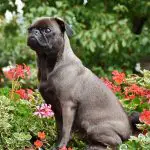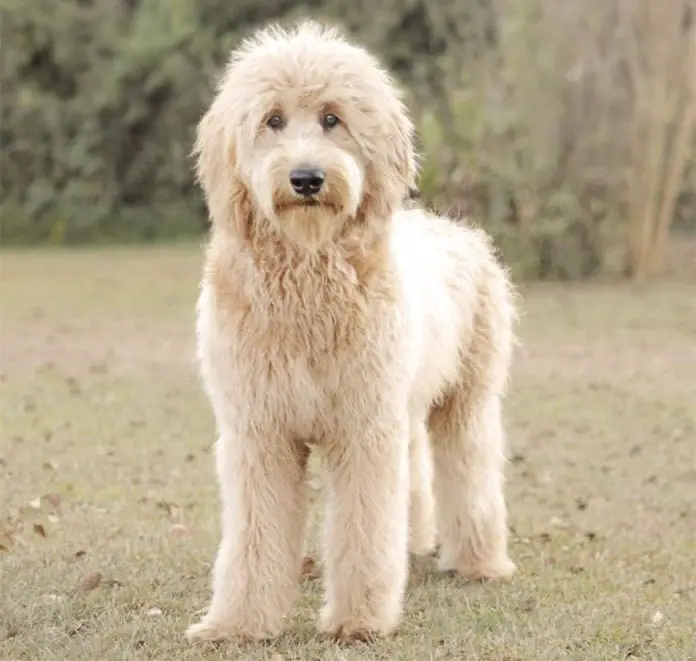
The English “TeddyBear” Goldendoodle is a hybrid dog generated by crossbreeding a Poodle with an English Golden Retriever. It was bred by Monica Dickens in 1969 and it gained popularity in the ‘90s when the people from North America and some from Australia started crossbreeding Golden Retrievers and Standard Poodles. They did this to try to get a breed that people with visual impairment and allergies to dog fur and dander can use.
While being a pretty intelligent designer dog, the “teddy bear” reference must be due to its affectionate nature and the warmth they exude not just towards their owners, but also to kids and strangers. Read on to know how the Goldendoodle got its name and its intrinsic nature.
Breeding
In the generation of a Goldendoodle, the fleece coat of the Standard Poodle is among the most wanted traits in order to obtain the Goldendoodle’s hypoallergenic nature. It’s more likely to have the non-shedding characteristic of the Poodle if a Goldendoodle inherits this trait, thereby reducing dander. Dander is the one that causes allergies to some humans and it is made up of protein.
Aside from that, the quality of super-intelligence is another reason the Goldendoodle crossbreeds are so desired by many. Poodles were ranked second and Golden Retrievers came fourth on the list of the brightest dogs in the understanding of new commands and obeying first commands 95% of the time or even better.
However, there are no guarantees as to how many or if all the litters of puppies of this hybrid will inherit certain traits in particular and if they will pass them on to their descendants. Hence, the need for the variations in their breeding.
The first generation of the breeds, referred to as F1, is the direct descendant of the breeding of male Poodles with a female Golden Retrievers, resulting in an equal percentage of each of the different dog genes. That is 50% Poodle and 50% Golden Retriever.
To get the more preferred variant of the Goldendoodle which barely sheds, a male Poodle is crossbred, this time with a female F1 Goldendoodle, to produce an F1B (F1 Backcross). The percentage of Poodle to Golden Retriever in this instance becomes 75% to 25% respectively.
Similarly, an F2 or the second generation Goldendoodle, is the descendant of two F1 or first generation Goldendoodles, which is also 50% Poodle and 50% Golden Retriever. In a similar fashion, an F2 or second generation Goldendoodle can also be backcrossed with a male Poodle to give an F2B Goldendoodle, which is 67.5% Poodle and 37.5% Golden Retriever.
The F3 breed usually encompasses everything there is past the F2 generation, with the “B” backcross indicator either missing or not. But most breeders would rather stop at the F1 generation and most of them prefer the F1B first generation backcross. This is to get the optimum diversity of genes and to avoid any inherent health complications associated with crossbreeding.
Health
Experienced breeding will likely produce a healthy Goldendoodle, even though the parent breeds – the Poodle and the Golden Retriever – are both prone to hip dysplasia. So, an OFA (Orthopedic Foundation for Animals) or PennHip examination is usually recommended before any such breeding occurs.
Furthermore, as a result of their susceptibility to some eye disorders that can be inherited, annual CERF or the Canine Eye Registration Foundation examinations are carried out before breeding. A bleeding disorder called von Willebrand’s Disease (vWD) can as well be discovered in the Poodle. So, it ought to be screened through DNA tests before it is bred.
Apart from that, the Goldendoodle’s inherited the Golden Retrievers ears. They hang and barely allow the water to dry up when the dog takes a bath or gets wet. This makes them prone to ear infections and yeast infections from swimming or engaging in any activity during which water can get into their ears.
Appearance
Depending on the percentage of Poodle or Golden Retriever in them, Goldendoodles can sport a curly coat just like the Poodle’s one or a wavy coat as a mix of the Golden Retriever’s straight fluff and the Poodles curly furs. It can also don a straight coat which is flat and looks more like that of the Golden Retriever.
With regards to size, the type of Poodle parent used in crossing comes to play. That is if it is a standard, medium, or miniature one.
In the case of a typical and standard adult Goldendoodle, it may weigh from 60 pounds to 100 pounds. For a medium one, it’ll likely weigh between 30 pounds to 45 pounds, while a mini Goldendoodle will weigh from 15 pounds to 30 pounds at most. The regular height from the shoulder to the ground for a male Goldendoodle is around 24 – 26 inches, and 22 – 23 inches for females.
Oftentimes, noteworthy weight is recorded for taller Goldendoodles who take more of the inherited genes from the Golden Retriever. Similarly, it’s commonplace for the Goldendoodle to inherit the so-called “Golden Retriever bump” that is found on the top of its head.
The coat colors vary from white to cream, some are apricot, gold, to black (also known as phantom), grey, and even red at times.
Grooming
Though easy to train and quick to learn commands, Goldendoodles are home pets and cannot develop properly if kept in a cage or strictly confined environment. They need to be handled with care while bathing them or engaging in any outdoor activity involving water because of the health issues caused by water entering the ears. Hence, they demand constant attention and because they are affectionate dogs, they function better when mildly chastised than otherwise.
Exercising it will only require daily walks of 20-30 minutes or a few minutes of swimming, due to their love for water and moderate energy level.
Conclusion
The English “Teddybear” Goldendoodles are not only hypoallergenic hybrids, but they’re also very homely and intelligent designer dogs suitable for many purposes and for literally everyone, old and young alike.
If interested in getting one of these most sought-after Goldendoodles, you’d have to contact some of the breeders early and make a booking for one since they’re sold according to your specifications and are bred to fit into the sizes preferred by the future owner.






